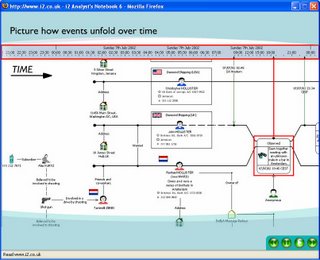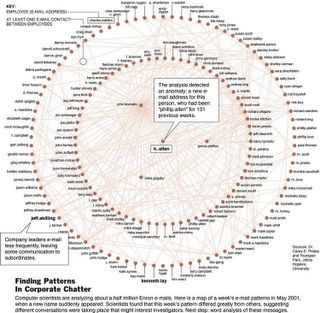I'm back from
Sunbelt (the big annual SNA conference) and feeling great--healthier, happier, and smarter than ever.
How can an academic conference of sociologists do all that?

Very simply--by keeping me away from my email. That's a lesson I learned from the
Visible-Path Award-Winning
PhD thesis and plenary address of
Nat Bulkley. In his statistically overpowering
study of the relationship between communication behavior and professional performance, he and co-author
Marshall Van Alstyne uncovered research showing just how toxic email-addiction can be: "worse than pot." (See this
story for more.)
The Sunbelt organizers showed great foresight in hosting this year's conference in Canada, the first country to legalize medicinal marijuana. For those of us who left our laptops (and email) at home, this opened up an opportunity to conduct some very enjoyable controlled experiments and help Nat refine his results.
Of course, Nat's research suggested more ways of improving productivity than just exceptionally relaxing breaks from email. He studied factors like use of email vs phone, rolodex size, and social network factors, among many others.
Now that I am home in the US, I not only have to answer emails again, but many medicines are harder to come by as well. That's fairly typical of the cultural differences separating us from our cooler more progressive neighbors to the north. But as my nearby colleagues who study social capital at
Harvard's Kennedy School can attest, as long as I keep up my social networking, perhaps I can still afford the risk of lighting up:
 This work is licensed under a Creative Commons Attribution-ShareAlike 2.5 License and is copyrighted (c) 2006 by Connective Associates except where otherwise noted.
This work is licensed under a Creative Commons Attribution-ShareAlike 2.5 License and is copyrighted (c) 2006 by Connective Associates except where otherwise noted.
 "Software to look for experts among your friends." Tacit Software has introduced Illumio, which "represents the eBayification of organizations" according to Michael Schrage, a researcher at the Massachusetts Institute of Technology Sloan School of Management.
"Software to look for experts among your friends." Tacit Software has introduced Illumio, which "represents the eBayification of organizations" according to Michael Schrage, a researcher at the Massachusetts Institute of Technology Sloan School of Management.








